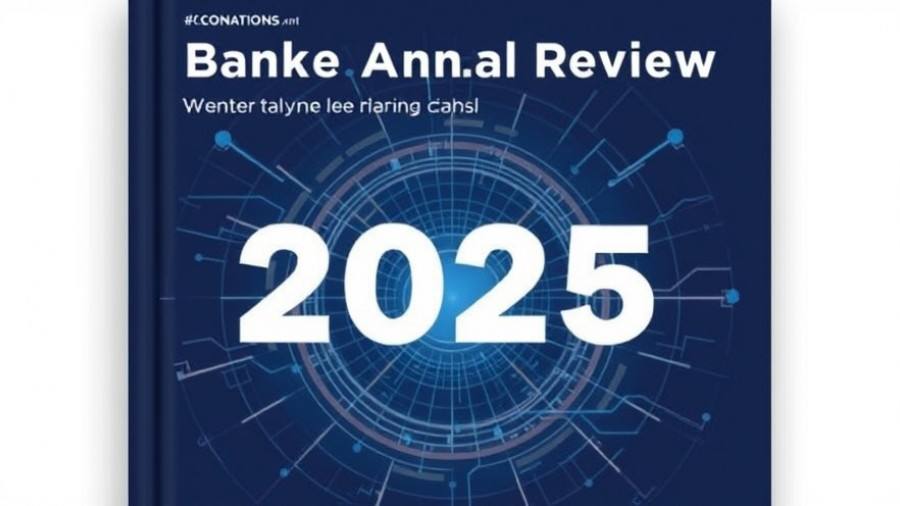
Understanding the Current Landscape of Banking
Recent years may have sounded a warning bell for the banking sector, with headlines of layoffs and economic worries suggesting mediocrity. However, beneath this surface runs a river of achievement; banks have accumulated phenomenal records of success, growing global banking intermediation by $122 trillion between 2019 and 2024. This increase fuels advancements in revenue, which reached an unprecedented total of $5.5 trillion in 2024, marking the banking sector as one of the highest performers across all industries.
The Shift Towards Precision
Looking forward, the Global Banking Annual Review 2025 emphasizes that being hefty is no longer an asset; rather, agility and precision have taken the forefront. With major banks facing a reversion to traditional growth patterns, merely holding firm isn't enough. The path forward may lie in adapting strategies that are far more tailored and less generalized. This could mean shifting away from broad customer segmentation to a hyper-personalized format, enabling banks to operate with a 'customer segment of one' approach that caters to individual needs through data-driven strategies.
Facing Economic Pressures and Competition
The uncertainty in valuation currently shadowing the banking sector points to deeper underlying issues. With a price-to-book ratio sitting approximately 67% lower than the average for other industries, capital markets seem skeptical about the value generated by banks. This skepticism is compounded by tightening economic conditions like fluctuating interest rates and ever-evolving customer expectations. Beyond traditional banking, competition from fintechs is further challenging the sector to innovate.
The Technology Toolbelt
A pivotal change is required in how banks integrate technology into their operations. It has been reported that financial institutions spend roughly $600 billion annually on technology, yet many are still falling behind with productivity. The necessity of adopting a 'precision toolbox' cannot be overstated, ensuring that resources focus on technologies that genuinely enhance workflows, customer engagement, and overall business models.
Future Perspectives on Banking Transformation
As we foresee the banking landscape evolving, it's crucial that professionals within the industry embrace emerging trends and technologies. By leveraging actionable data and real-time insights, banks can prepare for a future where adaptability is key. Banks must not only recognize these opportunities but also develop forward-thinking strategies to incorporate innovative changes.
The road ahead for banking is littered with challenges, but also rich with opportunities. Although historical strategies have faltered in today’s market, the industry's responsiveness to economic shifts and adaptability to technology will define the vibrant future of banking. Those who embark on this transformative journey will likely lead the pack, leaving the traditionalists behind.
In conclusion, understanding and acting on these insights could be pivotal for professionals across healthcare, finance, tech, and sustainability domains. By aligning their strategies with the precision approach outlined in the Global Banking Annual Review 2025, there lies the potential to not just survive, but truly thrive in a demanding economic environment.
 Add Row
Add Row  Add
Add 




Write A Comment